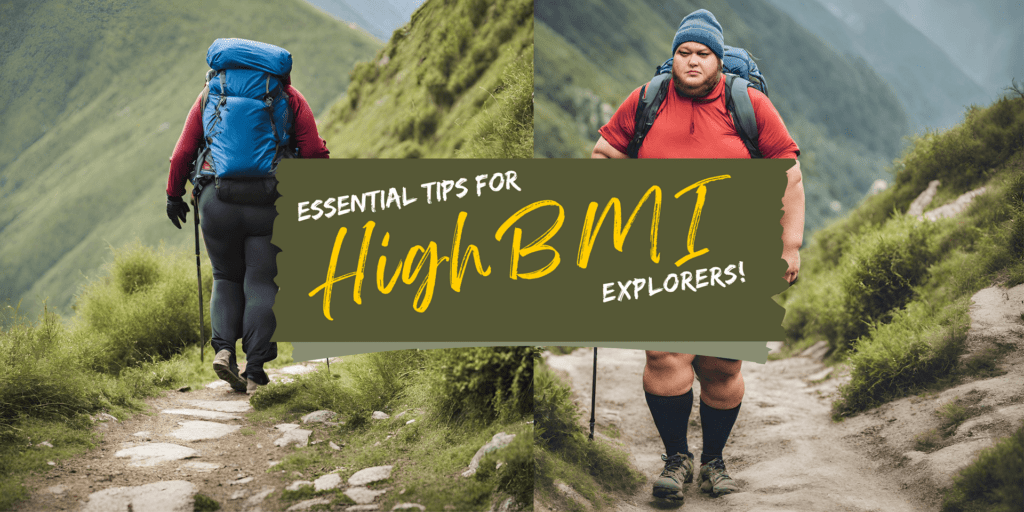Trekking with a high BMI (Body Mass Index) presents unique challenges, but it’s definitely achievable with proper preparation and mindset. Here are some essential tips for high BMI explorers!:
Is trekking suitable for individuals with a high BMI?
Yes, trekking can be suitable for individuals with a high BMI. However, it’s important to consult with a healthcare professional before embarking on any physical activity, especially at high altitudes. They can provide personalized advice based on your health condition.
What are the challenges of trekking with a high BMI?
Trekking with a high BMI may pose some challenges, including:
- Increased physical exertion due to carrying extra weight.
- Higher risk of fatigue and joint strain, especially on steep ascents and descents.
- Potential difficulties with fitting into standard-sized trekking gear and clothing.
How can individuals with a high BMI prepare for trekking?
- Physical Conditioning: Focus on improving cardiovascular fitness, strength, and flexibility through regular exercise. Start with low-impact activities like walking, swimming, or cycling, gradually increasing intensity and duration.
- Gradual Progression: Begin with shorter and less strenuous treks to build endurance and confidence before attempting more challenging ones.
- Weight Management: While weight loss may not be the primary goal, adopting a balanced diet and maintaining a healthy lifestyle can improve overall fitness and reduce strain during trekking.
- Gear Selection: Invest in high-quality trekking gear and clothing designed for larger body sizes to ensure comfort and proper fit.
- Altitude Acclimatization: Allow sufficient time for acclimatization at higher altitudes to minimize the risk of altitude sickness.
What precautions should individuals with a high BMI take while trekking?
- Hydration: Stay hydrated by drinking plenty of water throughout the trek, especially at higher altitudes where dehydration is more common.
- Pacing: Trek at a comfortable pace, taking breaks as needed to rest and refuel.
- Joint Care: Use trekking poles to reduce strain on joints during descents and uneven terrain.
- Proper Nutrition: Pack nutritious snacks and meals to maintain energy levels during the trek.
- Listen to Your Body: Pay attention to any signs of fatigue, pain, or discomfort, and know when to rest or seek medical assistance if necessary.
Are there specific treks recommended for individuals with a high BMI?
While individuals with a high BMI can undertake a wide range of treks, it’s advisable to start with shorter and less strenuous routes, gradually progressing to more challenging ones. Look for treks with moderate ascents and well-defined trails to begin with.
Final Thoughts:
Trekking with a high BMI is not without its challenges, but with proper preparation, mindset, and support, it can be a rewarding and fulfilling experience. Remember to listen to your body, take necessary precautions, and enjoy the journey at your own pace.

